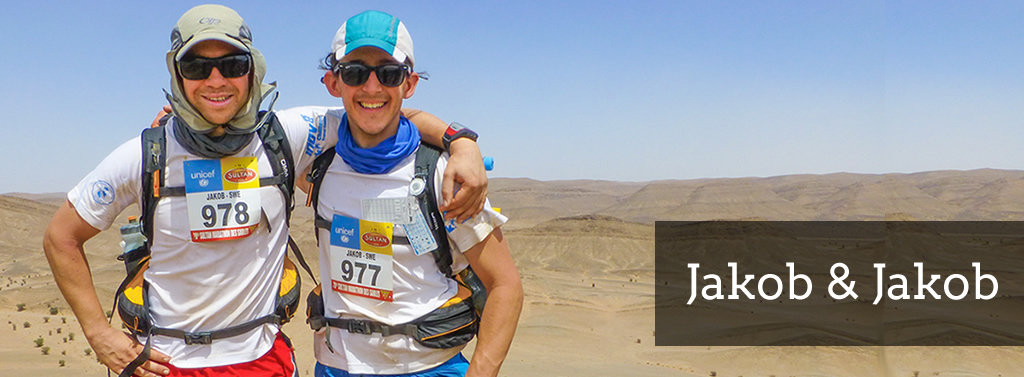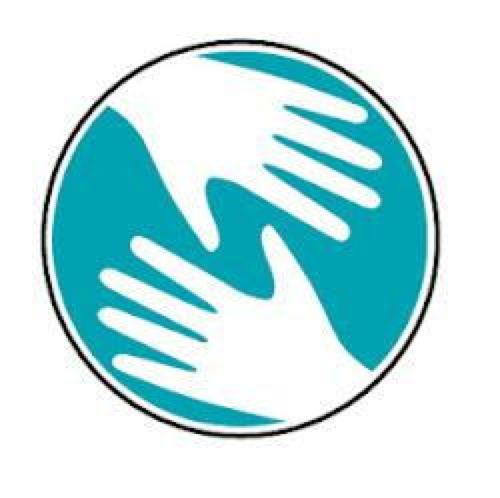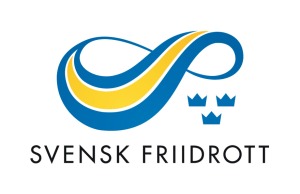Sur les Traces des Ducs de Savoie 2016, Race Report
Even though it’s been almost three months since my failed attempt at finishing the TDS, it didn’t take me long to start planning forwards again. I’ve tried a DNF before and it’s not an experience I relish. All the more so since the start of the race promised a beautiful day out in the mountains. I guess it only goes to show that running such a distance in that kind of Alpine terrain under those circumstances is not to be taken on lightly, not even for a seasoned ultra runner. There are so many details to get right, so many minute things that have to click seamlessly into place that when they do, and you cross a finish line, you almost never stop to reflect on how lucky you were. This time, I sincerely believe I was in very good shape and properly prepared for the task ahead. Even though I hadn’t put in as many kilometers as last year (your schedule gets pretty tight when you’re combining a full-time job with chasing two toddlers around), my coach Sondre had done a spot-on job of preparing me for the race, focusing as much on quality as quantity. As evidence, I would like to point out the fact that the first 51 km into Bourg St Maurice went faster and better than any ultra I have ever raced, and then I was still pacing myself not to run too fast downhill from Col du Petit St –Bernard. Still, I outran my dad who took the car down. But I’m getting ahead of myself.
I’ve been told that summer in Chamonix is even more popular than winter, which would explain the complete lack of affordable flats to rent for UTMB-week. Dad and I opted for a small and cosy apartment in nearby Argentiere as our base of operations and it worked pretty well. The only issue was finding a spot to park while in Chamonix but during these hectic days we managed to wedge our car in several tight spots without too much trouble. Standing in line for the bib-pick up, dad started up a friendly conversation with one of my fellow runners, a very pleasant fellow called Mark who had DNF’ed the TDS last year. He was a UTMB-finisher, but had to call it quits at the very last check point of TDS due to a knee injury, so he was here for a second go at this, the toughest of races. We chatted for a while and his impression of the course only emphasized my own idea of an extremely challenging course. After the pick-up, we met up with Sondre who would be joining me for the TDS, and his friend Didrik Hermansen who happens to be one of the best ultrarunners in Norway. Not only has he won both Lavaredo Ultra Trail (in 2015) and Transgrancanaria (in 2016), but even more impressive was his recent second place at this summer’s Western States Endurance Race. Sharing a coffee with these two royalties of ultra running was a bit surreal, and certainly a nerdy amateur runner’s dream come true, so I tried to soak up their bits of advice as well as I could.

With Mark at the bib pickup

With trail running royalty: Sondre Amdahl and Didrik Hermansen
For once, I had a pretty good night’s sleep before the race. I normally abhor early morning starts (i.e. before 8 a.m.), and this race was supposed to start at 06.00. We picked Sondre up at 04.30 before we headed for the Mont Blanc-tunnel and Italy on the other side. Sondre took us for a caffè at a local hotel before we both headed for the starting line. I gave dad a quick hug before we set off, knowing I wouldn’t see him again until lunch, at the top of Col du Petit St-Bernard. The TDS course is a lot more inaccessible than the UTMB, especially for spectators, which had forced me and dad to plan meticulously for the assistance I would be allowed, and how best to time it. I was especially looking forward to meeting up with Jakob’s sister Monika, a dear old friend of mine whom I hadn’t met in several years and who would be making the trip to the Alps just for the pleasure of seeing me run (she lives on the other side of the world, in Western Australia, so her visits are regretfully few and far between). The gun went off, the Italian spectators cheered and 2 000 headlights bobbed down Via Roma in Courmayeur towards the bottom of the first ascent up the alpine slope and the 800 m up to the first checkpoint at Col Chécrouit. Turning around, I was met by one of the more impressive vistas of the race with a light fog carpeting the bottom of the Aosta valley while the rising sun had just begun to chase away the deep blue darkness of night and paint the mountaintops the lightest shade of purple. Have I told you why I love these races ? After Col Chécrouit, the trail got narrow which led to slow queues this early in the race. After bundling past a few runners I arrived at the top of the ridge at Arête du Mont-Favre before I headed downhill towards the next checkpoint. I recognized the narrow trail from last year’s UTMB when I had run it uphill in the opposite direction, which means I knew what was expecting me around most of the turns down the mountain – always a good help when you are running a race for the first time. I believe I arrived at Lac Combal (15 km) in 2h 50 mins, and in good spirits beside. I even gave Mark a pat on the back while standing in line to get our canteens filled up. The sun was well and truly up by now, and I made pretty good time up to Col Chavanne at 2 584 m where I arrived just before 10 o’clock. I took a minute or two to admire the view due south where grey-green Italian valleys opened up in front of me. The gravel track down to the bottom of the long winding valley was pretty tedious, but I could at least keep a decent pace. The sun had climbed higher into the sky and I was beginning to feel it hammering on my head. I joined a few other runners by a small waterfall at the side of the road in order to fill up my bottles and pour icy water down my back. I crossed a small wooden bridge at the end of the road and started upwards once again. Up and down, up and down. Cheering and clanging cowbells reached my ears through a small stand of trees I was passing through, and as I emerged I found myself in the middle of a slowly walking avalanche of white-and-brown-spotted cows with cowbells while people who had parked along the side of the road were applauding and cheering us on. The climb up to Col du Petit Saint-Bernard went slowly, and for the first time during the race I suffered a bit. The little trail went up and down through the natural folds of the hills, and there were several official race signs warning us not to step outside the trail lest we damage the sensitive eco-system. More and more of the races I’ve had the privilege of running during the last couple of years have made a proper effort to raise awareness around the footprints we runners and the races leave behind us, and a conscious effort is more often than not made to reduce the garbage we runners leave behind. The TDS took us through some parts that were apparently ecologically sensitive and at a few of these places there were even stern-eyed race officials making sure we didn’t take any non-sanctioned shortcuts across grassy fields of flowers. I ran around a crystal clear lake (teeming with tadpoles !) before literally knocking head-first into a vertical wall separating me from the checkpoint at the little St Bernard’s pass. My face cracked into a smile when I both heard and saw dad running up towards me with the camera, patting me on the back and telling me that it was incredible that I had already reached the checkpoint, ahead of our calculations. He was so happy he snapped a few photos of me entering and exiting one of the porta-loos. For documentation purposes, you understand ; « One day, you’ll be happy I took those particular pictures. » Yup, dad. Can’t wait to frame them. I managed to gulp down some hot soup and then jogged along the asphalt road leading to the border crossing between Italy and France, where dad would leave me to drive down to the next check-point at 51 km at the bottom of the valley.

Leaving Col du Petit Saint-Bernard and heading down into Bourg Saint Maurice
The descent down into Bourg St Maurice went fantastically well. Finally, my hard work with specific downhill training in Wyllerløypa back home was paying dividends. I believe I passed 25 – 30 runners on the long way down into the valley, even though I was very careful not to overdo my pace. The heat waves rising from the yellow-greenish patches of grass were palpable and any chance I got, I stopped and submerged my head in one of the many water-filled stone basins I passed in the villages on my way down. I ran into Bourg St Maurice, and just before entering the checkpoint I saw dad again, rushing towards me with an incredulous smile. I had beaten him on foot down from the border crossing (admittedly, he had stopped the car a few times to take pictures, but still) and had reached the checkpoint before three in the afternoon, more than an hour better than my best estimate of how fast I’d run. He was so surprised he had almost missed me since he wasn’t expecting me yet. And lucky for me that he hadn’t since this was the first (out of only two) checkpoints where he could help me fill up my small cache of food. I took my time in order to rest properly, but I didn’t wish to dither too long lest I lose all of my headtime. I got delayed for a few more minutes while the runner sitting next to me fainted and crashed to the floor, but all in all I made good time (and yes, I helped him out). The time was around half past three and I was feeling extremely optimistic when I headed out from the Bourg St Maurice via the obligatory check of compulsory gear in my backpack. I knew that the absolutely worst climb of the entire race lay before me : 1 200 extremely painful vertical meters in only 5 km. You might as well hand me a climbing harness and a helmet for the ascent. I knew it would be painful, but as the old saying goes : suffering is optional. Well, not so optional as it turned out. The first third went well, since it was in the shade of trees. As soon as I left their comforting protection though, the sun hit my back and head with renewed force. The climb was on a completely exposed and southward-facing mountainside, and there was no place to run from the intense afternoon sun. Reports down in Bourg had the quicksilver hitting 33 ° C, and I was hoping against hope to reach the top without turning into a boiled egg. Unfortunately, that’s exactly what happened. I can’t remember a single race during the last few years where I have sat down on the ground between checkpoints in order to catch my breath and rest. Sure, I routinely stop for a minute or two during steep ascents and lean on my poles or a tree for support, but I don’t sit down. Ever. This time I did. At least half a dozen times. Or a dozen. I don’t really remember. Everywhere, I passed runners sitting down, and when I, in turn, sat down, they would pass me themselves. I must have met at least 30 fellow runners who had given up and were heading the wrong way, down the hill and back towards Bourg again. I was tired, sure, but I couldn’t yet imagine the fatigue that had led these poor souls to abandon the race. That would change soon as well. I normally thrive on the views and beautiful buildings along these trails, but I passed the impressive ruin of Fort de la Platte halfway up almost without glancing at it. When I finally stumbled into Col de la Forclaz I was dizzy, nauseous and had a headache normally reserved for patients with traumatic brain injury. I got hold of a water hose and filled my empty bottles again before I tried to find some blessed shade.

Studying the map at Bourg Saint Maurice
But after only a minute or two I started freezing and my teeth started to chatter, so I had to move into the accursed sunlight again. I was this close to abandoning the race right there, but decided to give myself a chance to rest for an hour before heading on. I had gotten that much headstart, at least, that I didn’t have to worry about the cutoff time anytime soon. When I continued, it felt as if I hadn’t rested at all and both my head and my body were cursing at me for not staying where I was and simply give up. This sounds as though it’s taken from a bad Hollywood movie, but I refused to abandon and walked on, up the gravel road. My head had cleared a bit and I was hoping to reach Passeur de Pralognan at 2 567 m before nightfall, but I just missed the last daylight on my climb up to the top and had to stop in order to shrug into my windjacket. I’d regained enough of my wits to realize that I was just then having the privilege of climbing a marvellous, but dangerously sheer cliff face with a phenomenal view of the valley we had only just left behind us. I sat down several times during the climb and had to rummage around in my pack for my headlight before I reached the top. There a grey-bearded race official gently but firmly gestured for me to grab my poles with one hand – for balance and to grab the ropes with my free hand – before attempting the steep descent on the other side of the ridge. As always, after nightfall, the view of the headlights bobbing steeply down the cliffside was surreal. Like little glow worms creeping down a hill. We were aided by ropes strung down the slope at regular intervals, and even though it was pretty steep, it still didn’t compare in the slightest to the panic-inducing drops of Tromsø Skyrace a few weeks back. But this part of the race made me realize that I didn’t have the strength left to safely finish the remaining kilometers to Chamonix, especially if there was more of this to come. The kilometers between Col de la Forclaz and the next checkpoint at Cormet de Roselend at 66,6 km dragged on forever. My pace had shrunken to a snail’s and I imagined that my ranking had plummeted like a stone since leaving Bourg St Maurice. I had already made up my mind to abandon at Cormet, and I picked up my dropbag before heading to the race officials to get my bib clipped and tag removed. At that point, I didn’t feel even the slightest bit of regret or disappointment. That came later. Right now, I only felt an enormous relief, justifying to myself that it would have been dangerous to continue and that I would have risked worse than the sunstroke I was suffering from. I boarded the bus for repatriation back to Chamonix and sent an sms to miss H, Panda and Teddy waiting back home in Oslo and to dad and Monika, waiting for me in Chamonix. And then I dozed off.
Right then and there, the dominant emotion was definitely one of relief. I’d fought as hard as I could, but in the end it was the heat of the day that killed me. I’ve had sunstroke before and even though I was quite rational about it once the symptoms kicked in, I couldn’t manage to pick myself up and I told myself that it would be dangerous to continue the race. These persuasion attempts notwithstanding, I still felt extremely disappointed when I woke up the following morning. How in the name of all that is holy could I have abandoned the race? I felt tired, for sure, and had a few aches here and there, but nothing major. But that’s the thing with sunstroke. All you need is fluid and a good night’s sleep to recover.

With Mon at the top of Chamonix
Dad, Monika and I spent a lovely day sightseeing in Chamonix and taking the by now obligatory tour with the cable car up to Aiguille du Midi for the fabulous view. Later in the day, I learned that my coach Sondre had also abandoned the TDS for almost the same reason as me, and also because he didn’t want to jeopardize his attempt at Tor des Geants a few weeks later. A few days later, I was also sad to hear that Didrik had abandoned the UTMB as well. Despite being one of the favourites to win the race, it was simply not his day out there. On Friday, dad, Monika and I drove to Croatia to attend Jakob and Marija’s wedding party in Vodice. Both the dinner and the party managed to conclude my disappointing race week in a fantastic fashion. Huge congratulations to the both of you and a huge armful of love!

How Jakob managed to catch this beautiful woman, I will never understand.
My running after TDS has been absolutely dismal. Catastrophic, even. A few highlights have included balloon pacing Oslo halfmarathon in September and surprising myself with a decent effort at Oslos Bratteste in October after having to skip the race the last couple of years, but apart from that I’ve been monumentally lazy. At the time of writing, I’m spending a few months at home on paternity leave with wee Teddy after having spent last month together with my family in Portugal. There, I finally started running again and am right now trying to dig myself out of the Pit of Inertia I’ve managed to fall into. I’m still working on both short and long term goals for next year, but I’ll keep you posted. God bless!







































































